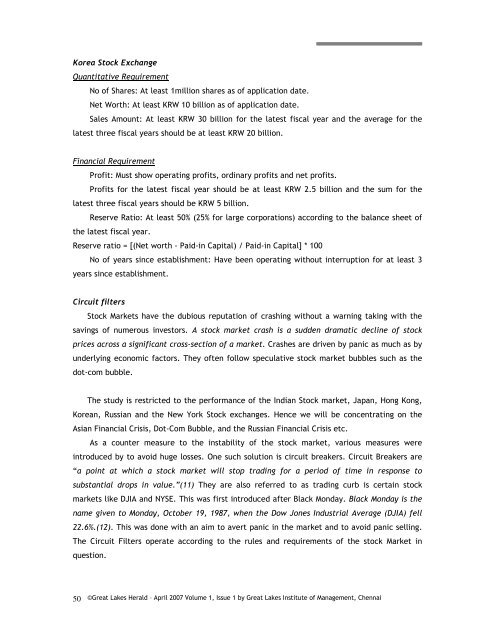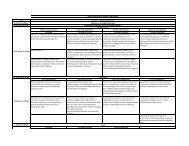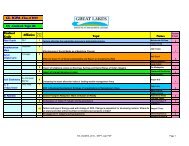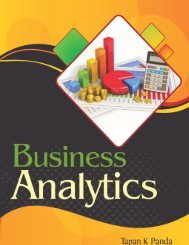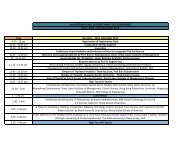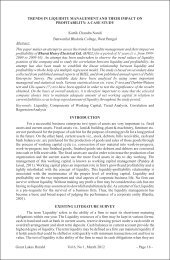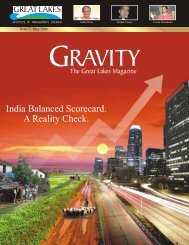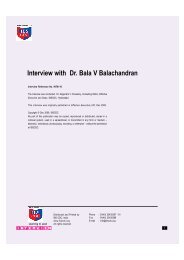Comparative Analysis of Indian Stock Market with ... - Great Lakes
Comparative Analysis of Indian Stock Market with ... - Great Lakes
Comparative Analysis of Indian Stock Market with ... - Great Lakes
You also want an ePaper? Increase the reach of your titles
YUMPU automatically turns print PDFs into web optimized ePapers that Google loves.
Korea <strong>Stock</strong> Exchange<br />
Quantitative Requirement<br />
50<br />
No <strong>of</strong> Shares: At least 1million shares as <strong>of</strong> application date.<br />
Net Worth: At least KRW 10 billion as <strong>of</strong> application date.<br />
Sales Amount: At least KRW 30 billion for the latest fiscal year and the average for the<br />
latest three fiscal years should be at least KRW 20 billion.<br />
Financial Requirement<br />
Pr<strong>of</strong>it: Must show operating pr<strong>of</strong>its, ordinary pr<strong>of</strong>its and net pr<strong>of</strong>its.<br />
Pr<strong>of</strong>its for the latest fiscal year should be at least KRW 2.5 billion and the sum for the<br />
latest three fiscal years should be KRW 5 billion.<br />
Reserve Ratio: At least 50% (25% for large corporations) according to the balance sheet <strong>of</strong><br />
the latest fiscal year.<br />
Reserve ratio = [(Net worth - Paid-in Capital) / Paid-in Capital] * 100<br />
No <strong>of</strong> years since establishment: Have been operating <strong>with</strong>out interruption for at least 3<br />
years since establishment.<br />
Circuit filters<br />
<strong>Stock</strong> <strong>Market</strong>s have the dubious reputation <strong>of</strong> crashing <strong>with</strong>out a warning taking <strong>with</strong> the<br />
savings <strong>of</strong> numerous investors. A stock market crash is a sudden dramatic decline <strong>of</strong> stock<br />
prices across a significant cross-section <strong>of</strong> a market. Crashes are driven by panic as much as by<br />
underlying economic factors. They <strong>of</strong>ten follow speculative stock market bubbles such as the<br />
dot-com bubble.<br />
The study is restricted to the performance <strong>of</strong> the <strong>Indian</strong> <strong>Stock</strong> market, Japan, Hong Kong,<br />
Korean, Russian and the New York <strong>Stock</strong> exchanges. Hence we will be concentrating on the<br />
Asian Financial Crisis, Dot-Com Bubble, and the Russian Financial Crisis etc.<br />
As a counter measure to the instability <strong>of</strong> the stock market, various measures were<br />
introduced by to avoid huge losses. One such solution is circuit breakers. Circuit Breakers are<br />
“a point at which a stock market will stop trading for a period <strong>of</strong> time in response to<br />
substantial drops in value.”(11) They are also referred to as trading curb is certain stock<br />
markets like DJIA and NYSE. This was first introduced after Black Monday. Black Monday is the<br />
name given to Monday, October 19, 1987, when the Dow Jones Industrial Average (DJIA) fell<br />
22.6%.(12). This was done <strong>with</strong> an aim to avert panic in the market and to avoid panic selling.<br />
The Circuit Filters operate according to the rules and requirements <strong>of</strong> the stock <strong>Market</strong> in<br />
question.<br />
©<strong>Great</strong> <strong>Lakes</strong> Herald – April 2007 Volume 1, Issue 1 by <strong>Great</strong> <strong>Lakes</strong> Institute <strong>of</strong> Management, Chennai


